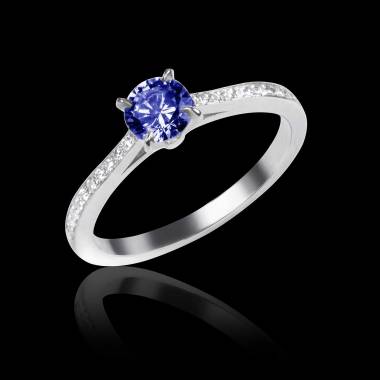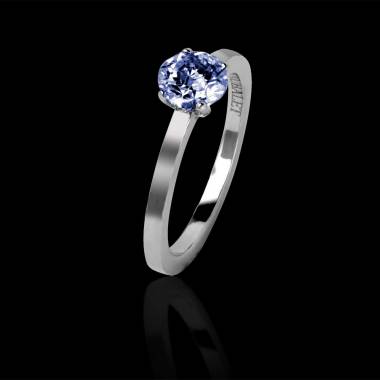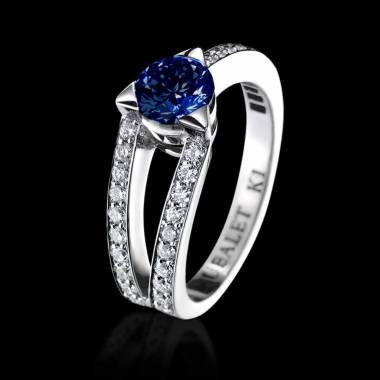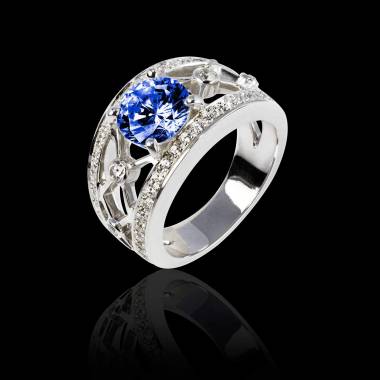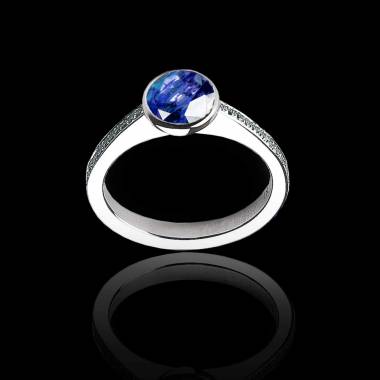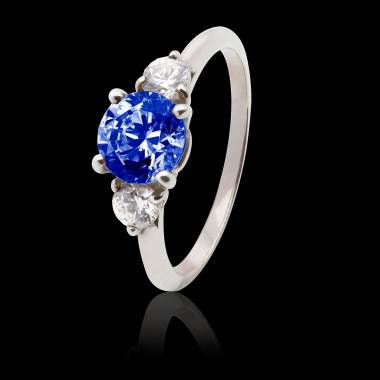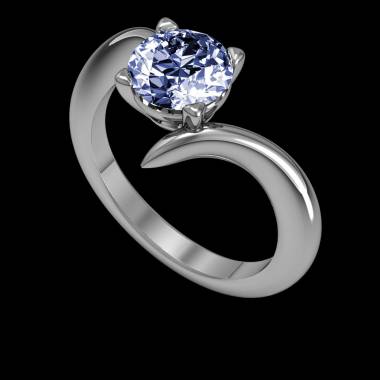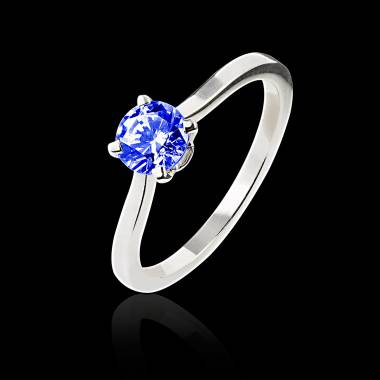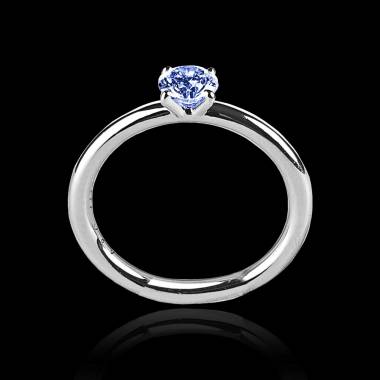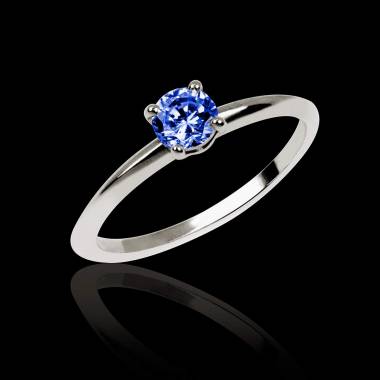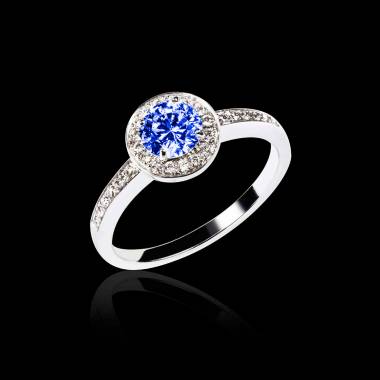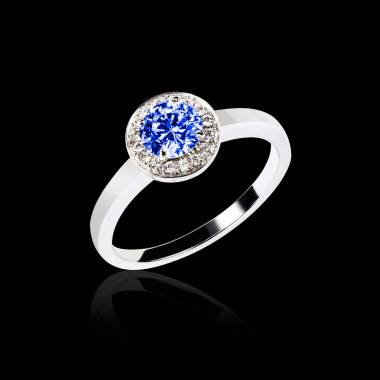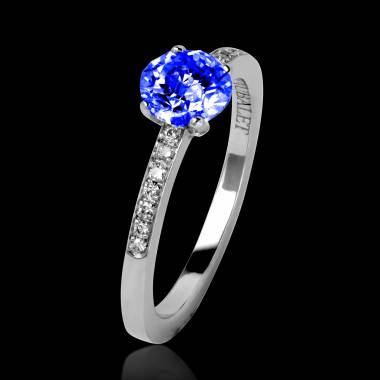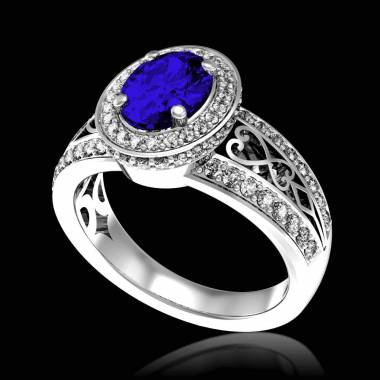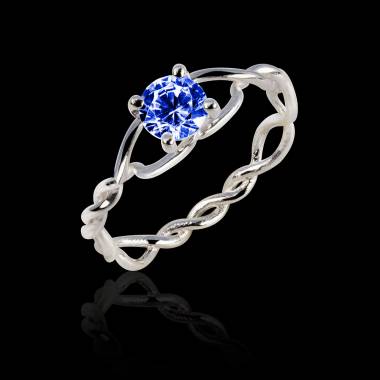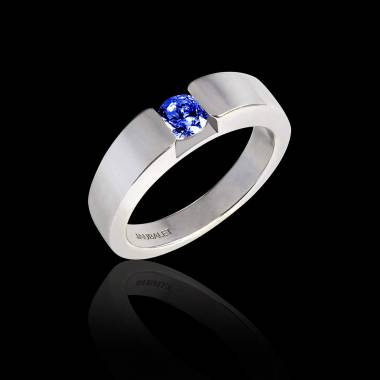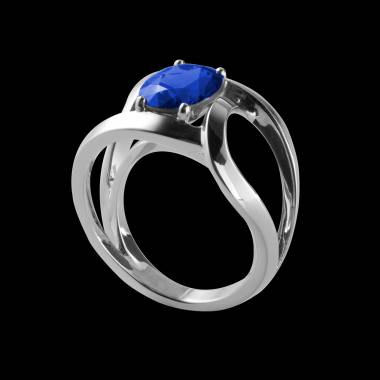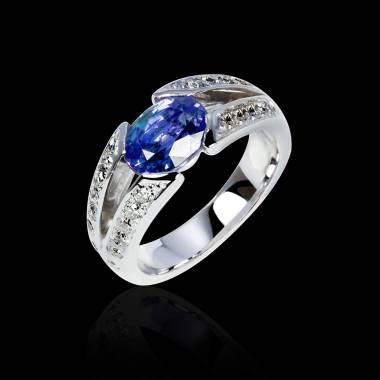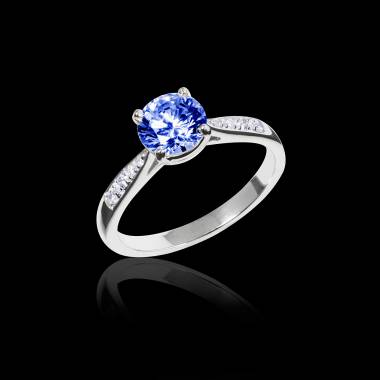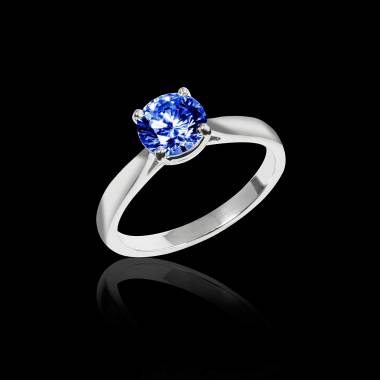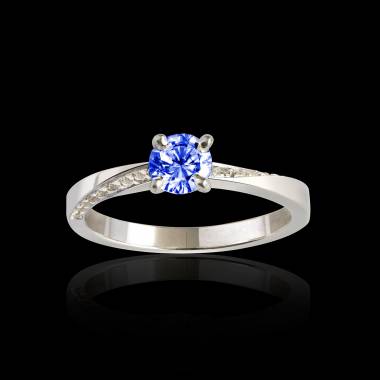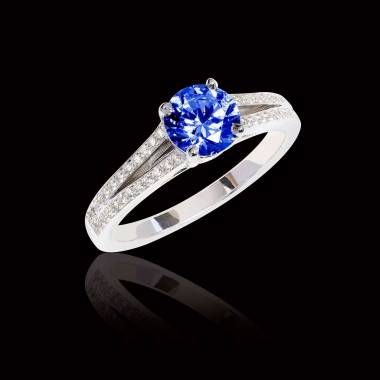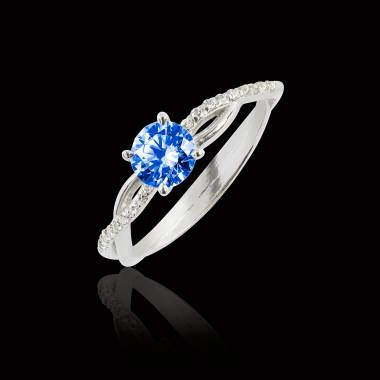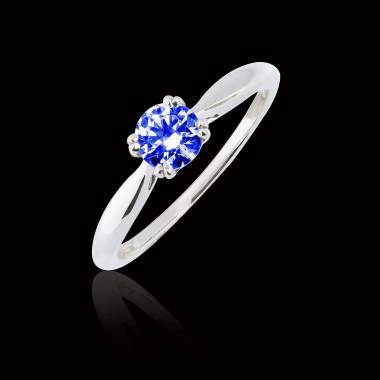History and meaning of the Tanzanite Engagement Ring.
Tanzanite was found in the late 1960s and gets its name from the country Tanzania where it was discovered. It belongs to the silicate tribe. Its colours vary from azure blue to violet, and the inclusion of chromium and vanadium traces in its composition is what gives it this vibrant appearance. According to legend, a destructive storm erupted in the Merelani Hills, not far from the famed 'Kilimanjaro' volcano, in the 1960s, igniting bushfires that forced the Maasai tribe to evacuate to safety from the fire's ravages. When they returned, they discovered blue stones on the field that had been grey-brown previously. They had turned into stunning blue gems as a result of the sun. This was a holy symbol for the Maasai, and the colour is precious to them. It is, without a doubt, a sign of a happy and prosperous life! They commissioned a local explorer to learn more about this precious crystal discovered on their surface, as they were perplexed by its existence. He sent them to a gemologist in northern Tanzania, who in turn sent them to his father in New York for study at the Gemological Institute of America (GIA) since he could not find it. This world-renowned mineralogical research centre determined that this was a significant find: a previously unknown zoite class (or Tanzanite). As you might have guessed, the Tanzanite engagement ring is made up of a unique precious stone! It is more than 1000 times rarer than the diamond since it is only found in Tanzania in a 20-kilometre-wide zone, and experts predict that the deposits will be depleted in around twenty years. Furthermore, the extraction conditions are especially complex and painful (flooding, high heat, lack of ventilation, etc.). As a result, demand outnumbers supply, resulting in an ever-increasing price on the market.
How to maintain a Tanzanite Engagement Ring?
Tanzanite is a softer gemstone than, say, emerald or sapphire. As a result, it is more delicate and susceptible to harm, necessitating extra caution. It does, in fact, have a cleavage plane, which, along with the trichroism, makes cutting more difficult. This means that, unlike diamonds, Tanzanite is easily broken when struck at an angle. Since it is easily scratched, it must be done with caution to prevent bruises and shocks. Here are some tips:
- Stop doing any physical work on your Tanzanite engagement ring, as this can harm it.
- Also, avoid exposing your Tanzanite engagement ring to sudden temperature changes. Thermal shock can be dangerous.
- Never use an ultrasonic cleaner on your Tanzanite engagement ring, and never expose it to acids.
Also, never use a blowtorch to minimize or patch your Tanzanite engagement ring after first extracting the stone, as the stone will fracture. Simply clean any places where dust has collected with a toothbrush after cleaning your Tanzanite engagement ring with a light dishwashing liquid.
How to Choose your Tanzanite Engagement Ring :
The first step is to choose the colour of your Tanzanite engagement ring.
The blue colour of Tanzanite is well-known and prized for its shifting reflections. It does exhibit extreme pleochroism, which means that its colour varies depending on the angle of observation. Since the crystal has three distinct colours: blue, red-violet, and bronze, we can also talk of trichroism here. Again, the strength and uniqueness of the crystal are determined by the angle by which it is seen. Tanzanite is a very pure stone, with no visible inclusions under the microscope or to the naked eye. And, as you already remember, the purer a ring is, the more valuable it is. Tanzanite is also available in green, yellow, pink, and orange. The "chameleon" is the most prestigious and stunning of the multi-coloured Tanzanites; it has amazing reflections! "Fancy Tanzanites" is another name for these multi-coloured stones many Tanzanite engagement rings have been heated (to about 600 degrees) in jewellery to bring out their natural colour and soften the browner colours. Colours ranging from ultramarine to sapphire are the most common. They are among the most costly and rare.
The second step is to choose the size and shape of your Tanzanite engagement ring.
Tanzanite crystals range in size and dimension, but only exceed 100 grams in weight. It is a trichromatic gemstone, and it has three distinct colours, as we have seen. The cutter's whole job is to facet the gem in order to pull out a true blue or a marginally more crimson colour, depending on whether he wants to keep the colour or the weight. Note that the cut necessitates extreme caution because the cleavage is fine but only in one direction, and the dominant colour is determined by the cutter's choice of orientation. The finer the diamonds, the more lavender tones they get, for example. The most common shapes of Tanzanite are cushion, oval and triangle.
The final step is to choose the metal that will be used with your Tanzanite engagement ring.
The shine of your Tanzanite engagement ring can be enhanced by yellow gold. It also looks great with silver and platinum, as well as pink or white gold. Jaubalet Paris will create your Tanzanite engagement ring to your exact specifications! To build the ring of your dreams, you choose the colour, height, form, weight, and associated metal. With this sumptuous custom-made ring, you will be able to symbolize your one-of-a-kind love. More information can be found HERE. You may also customize your Tanzanite engagement ring by selecting a ring from each of the site's collections and modifying only a few details. More information can be found HERE.














